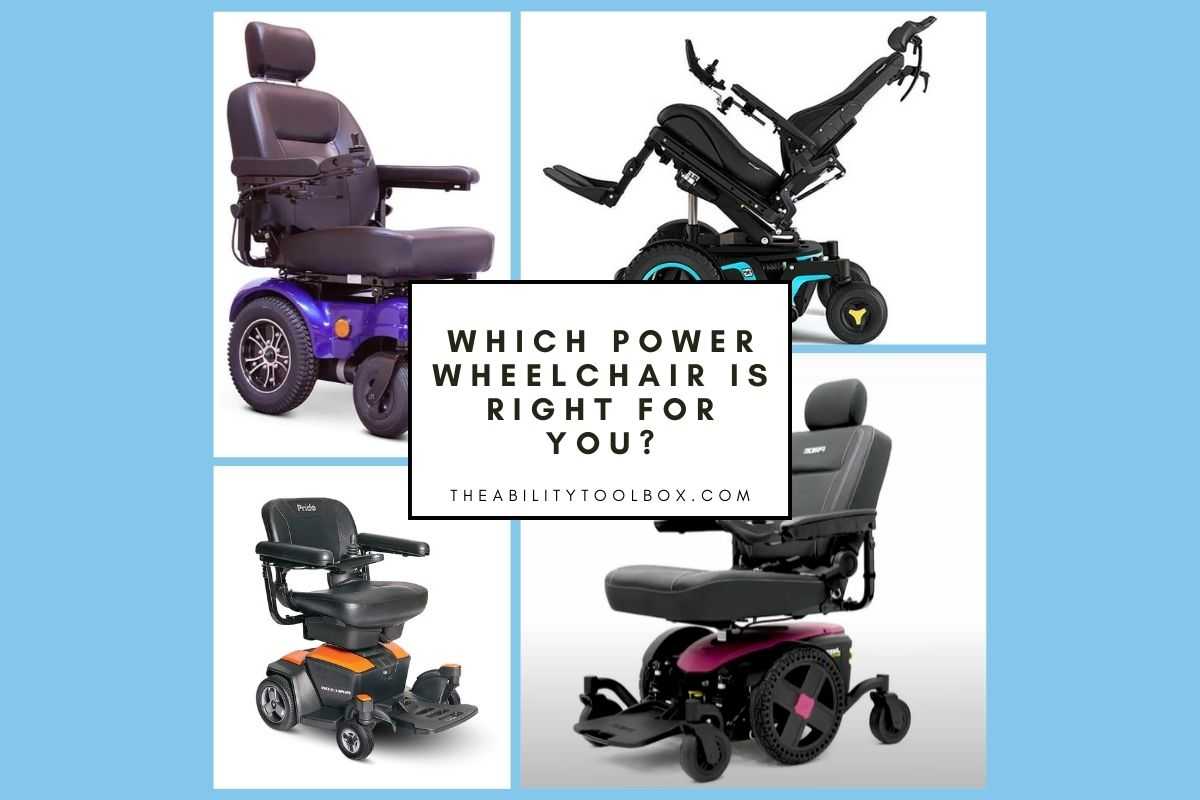
If you’re trying to decide which kind of power wheelchair is right for your needs, you're in the right place! So many people just accept whatever the medical supply store and/or their insurance wants to give them, only to find that the device doesn’t help them. If you go in knowing what you want, you can advocate for yourself. So let’s discuss some types of electric wheelchairs and why they may or may not be right for you.
Why We Created This Guide
Choosing the right type of electric wheelchair can be overwhelming. Whether you're shopping for a lightweight portable power wheelchair, getting a wheelchair via insurance, or searching for a used wheelchair, your options are endless. How do you decide?
I'm a power wheelchair user and disability advocate who works with an organization that accepts donated wheelchairs and matches them with people who need them. I've compiled this guide based on my experiences and recommendations from our community of people with disabilities here at The Ability Toolbox.
Electric Wheelchair Types
Mobility Scooters
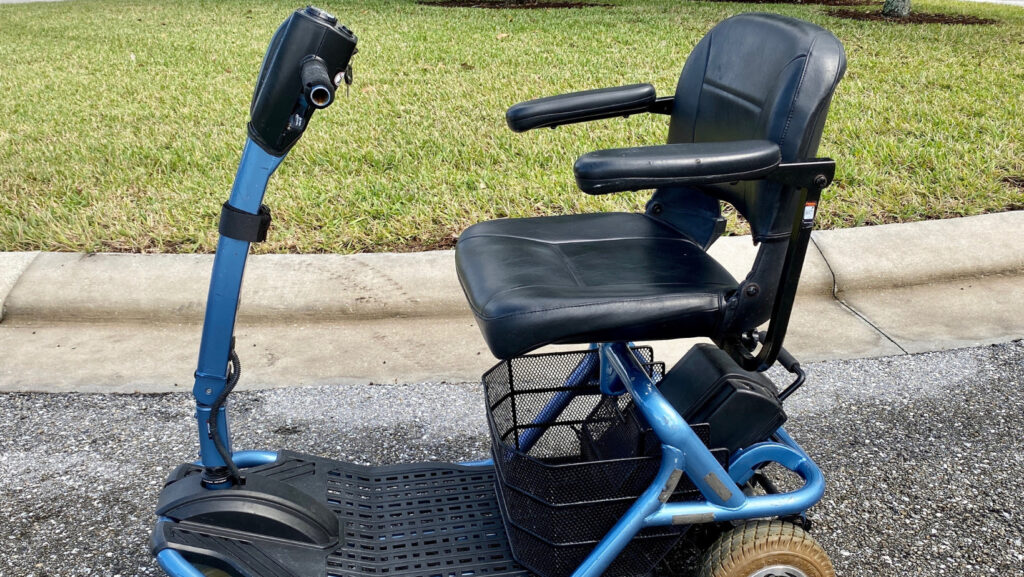
Mobility scooters are three or four-wheeled powered devices that are steered using a tiller control rather than a joystick. Scooters range from ultralight models designed for easy loading into a car trunk to large, rugged devices designed for outdoor use. The outdoor performance of mobility scooters varies between poor to excellent depending on the model. Likewise, battery range and performance depend on the model.
Reasonably good hand and arm dexterity are required to safely operate a mobility scooter. Due to their design, size, and wide turning radius, scooters don’t work well as an in-home mobility device. Although some scooters have a swivel seat, the tiller can make transferring in and out somewhat difficult. Mobility scooters have basic seating that cannot accommodate features such as pressure relief cushions, tilt, or recline.
Who Should Use a Mobility Scooter
Mobility scooters have been around since the 1970s and are a time-tested, reliable option for seniors and younger people who need help getting around. A mobility scooter can be a great choice if you're able to walk around your home but need a device for long distances, shopping, and travel.
If you choose a lightweight folding scooter, it can be easily loaded into a car trunk just like a folding power chair, and will be durable for airplane travel. With that said, if you're looking at portable devices, a folding electric wheelchair will be more multifunctional than a scooter as you can use it in tight indoor spaces.
If you have an accessible van or will just be using the scooter in your neighborhood or community, you can choose a robust 4-wheeled scooter with great outdoor performance. Outdoor-rated mobility scooters are excellent if you use sidewalks and public transportation to get around your community. You can carry lots of groceries by adding baskets and bags to the front tiller and the back of the seat.
Mobility Scooter Brands We Recommend
This is the best time in history to be shopping for a mobility scooter. The range of choices is almost infinite, and they’ve become far more affordable. Plus, with modern battery technology, you have many options for portable scooters that won’t require you to use a wheelchair-accessible van. There are several good brands within this space, but we will highlight two: Pride Mobility and ComfyGo.
Pride Mobility
Pride Mobility is one of the largest manufacturers of medical equipment. They are well-established in the industry and known for the reliability of their products. They have many excellent options if you’re looking for a heavier, durable outdoor scooter, or one that combines comfort and portability.
ComfyGo
ComfyGo is a newer player on the scene, but they’ve already distinguished themselves with their innovations in the portable mobility aid category. They make an amazing scooter that can load itself with its own ramp that easily installs in the back of an SUV. If you’re worried about taking apart or lifting a scooter, this is the solution you want. Although it’s not cheap, the cost is significantly less than purchasing an adaptive vehicle.
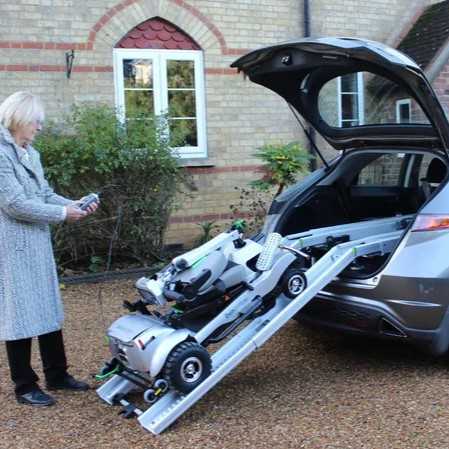
Quingo Flyte Mobility Scooter With Self Loading Ramp
- Folds and self-loads into your vehicle's rear hatch
- Non-lithium batteries with 23-mile range. Not airplane cabin compatible
- 4 mph top speed
- Max user weight 350 lbs.
Portable Lightweight Power Wheelchairs
Ultra-portable electric wheelchairs are relatively new, and since they came on the scene, they have transformed the landscape of powered mobility.
Today, there are many travel electric wheelchairs that weigh under 70 pounds and easily disassemble to fit in any vehicle. With a portable power wheelchair, you can go anywhere without needing an adapted vehicle with a ramp or lift. You can take an Uber or ride with a friend. Folding electric wheelchairs are great for air travel, as they use lightweight, airline-approved lithium batteries and can be stowed in the aircraft cabin closet rather than the cargo hold where numerous wheelchairs are damaged every day.
With all of those benefits, why wouldn’t you want a folding lightweight electric wheelchair? Well, portable power wheelchairs have limitations compared to full-size electric wheelchairs. In exchange for the much lighter weight, there are trade-offs in terms of speed, battery life, and outdoor performance. They may not be as comfortable to sit in for hours as other types of electric wheelchairs. You can, of course, bring a separate cushion to place on the seat for added comfort, but if you have skeletal deformities such as scoliosis, you may not be comfortable in an ultralight power wheelchair. There is a trade-off between weight and comfort; the portable chairs in the 60-pound weight range can be fairly comfortable, but the ultralights under 45 pounds may feel somewhat flimsy.
Lightweight power wheelchairs do not have any power positioning features such as tilt, recline, or seat elevation. That would make them too heavy.
Who Should Use a Folding Power Wheelchair
A portable power wheelchair is an ideal choice if you are somewhat ambulatory and/or have the ability to transfer to uneven surfaces (such as getting in and out of a car) independently. If you can walk around at home but need mobility for long distances, a folding electric wheelchair could be perfect for you.
If you or a loved one is a senior citizen and can no longer drive, a lightweight electric wheelchair can help you keep your mobility. With this type of wheelchair, you can get rides from family, friends, home health aides, and rideshare services such as Uber. If you travel by airplane frequently, or go on cruises, a folding electric wheelchair can help you enjoy your retirement even with limited mobility.
If you generally use a full-size power chair, a folding electric wheelchair makes a great spare to keep around in case your main wheelchair breaks down or you are traveling by plane and don’t want to risk it getting damaged.
Portable Electric Wheelchair Brands We Recommend
As with scooters, the portable power wheelchair industry has expanded greatly in the last few years, with numerous quality products available. The chairs keep getting lighter as material and battery technology advances.
ComfyGo
Currently, our favorite brand in this space is ComfyGo. They make a wide range of portable electric wheelchairs ranging from less than 40 pounds to 70 pounds.
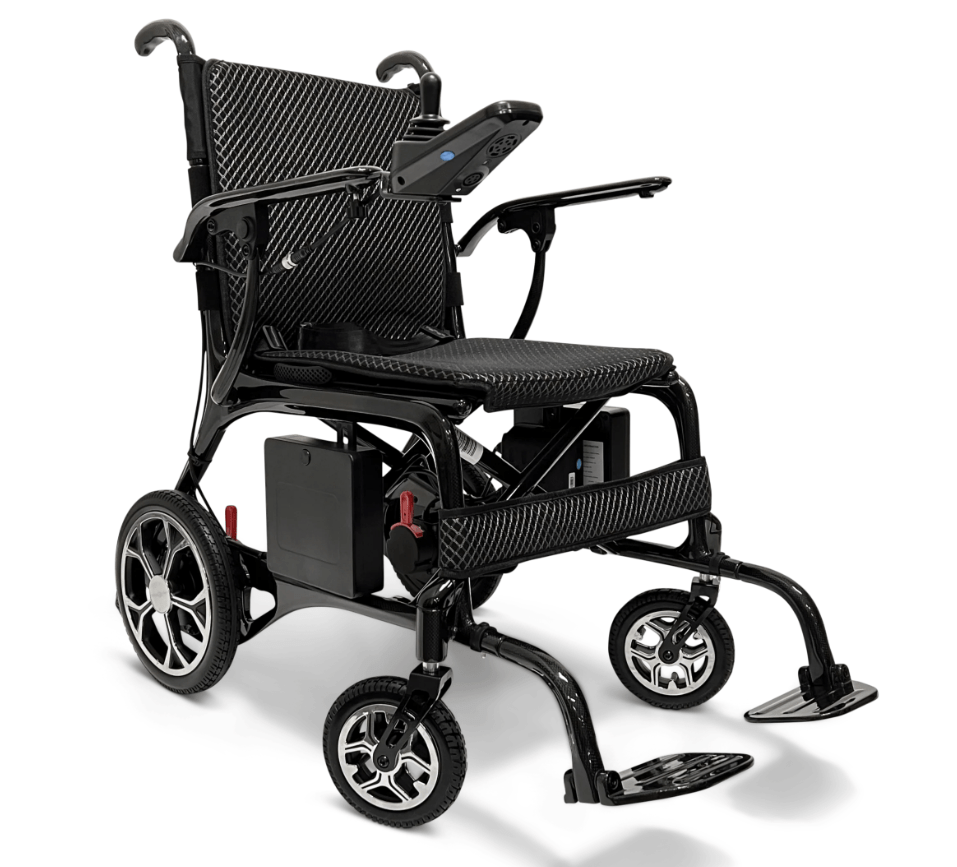
ComfyGo Phoenix Travel Electric Wheelchair -- Only 35 Lbs.
- Folds to fit in a car trunk or airplane cabin closet
- Airline-approved lithium battery with 15.5-mile range
- 4 mph top speed
- Max user weight 240 lbs.
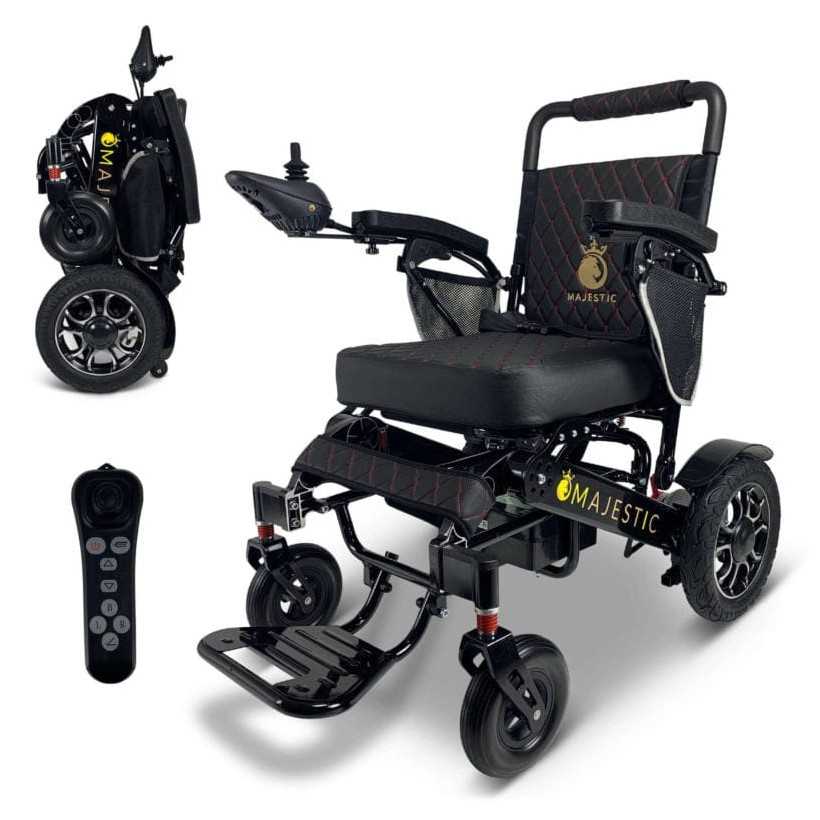
ComfyGo Majestic IQ-7000 Folding Power Wheelchair
- Folds to fit in a car trunk or airplane cabin closet
- Airline-approved lithium battery with 13-mile range
- 4 mph top speed
- Max user weight 350 lbs.
Feather
Feather specializes in very light portable manual and power wheelchairs. If you or the person who will be lifting the wheelchair has very limited strength, they will be a good choice.
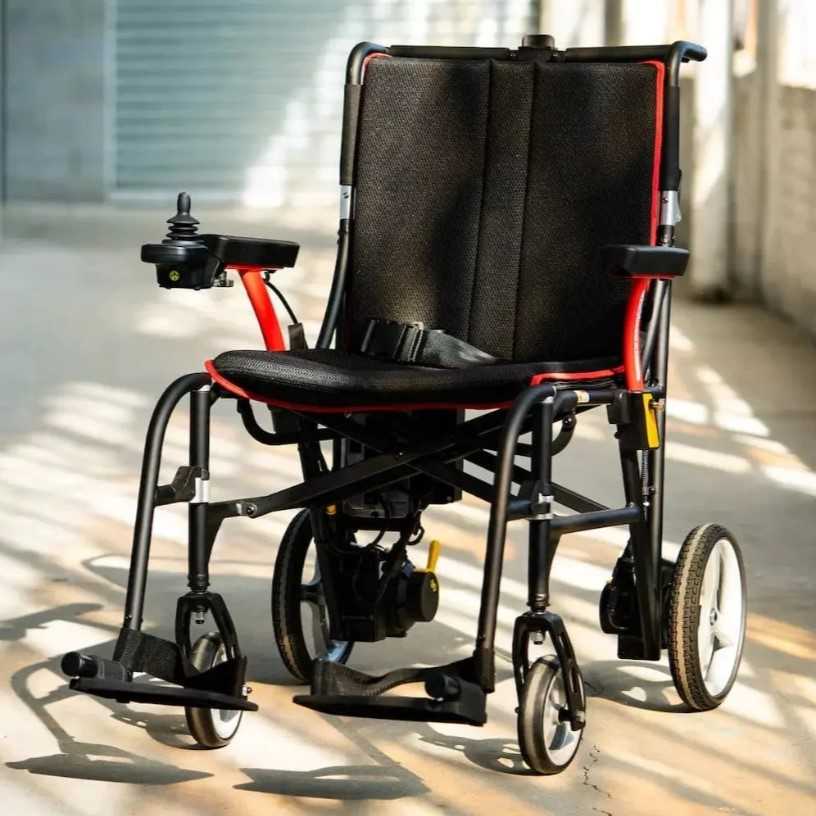
Feather Ultralight Portable Electric Wheelchair -- Only 33 Pounds
- Folds to fit in a car trunk or airplane cabin closet
- Airline-approved lithium battery with 11-mile range
- 4 mph top speed
- Max user weight 250 lbs.
Standard Power Wheelchairs
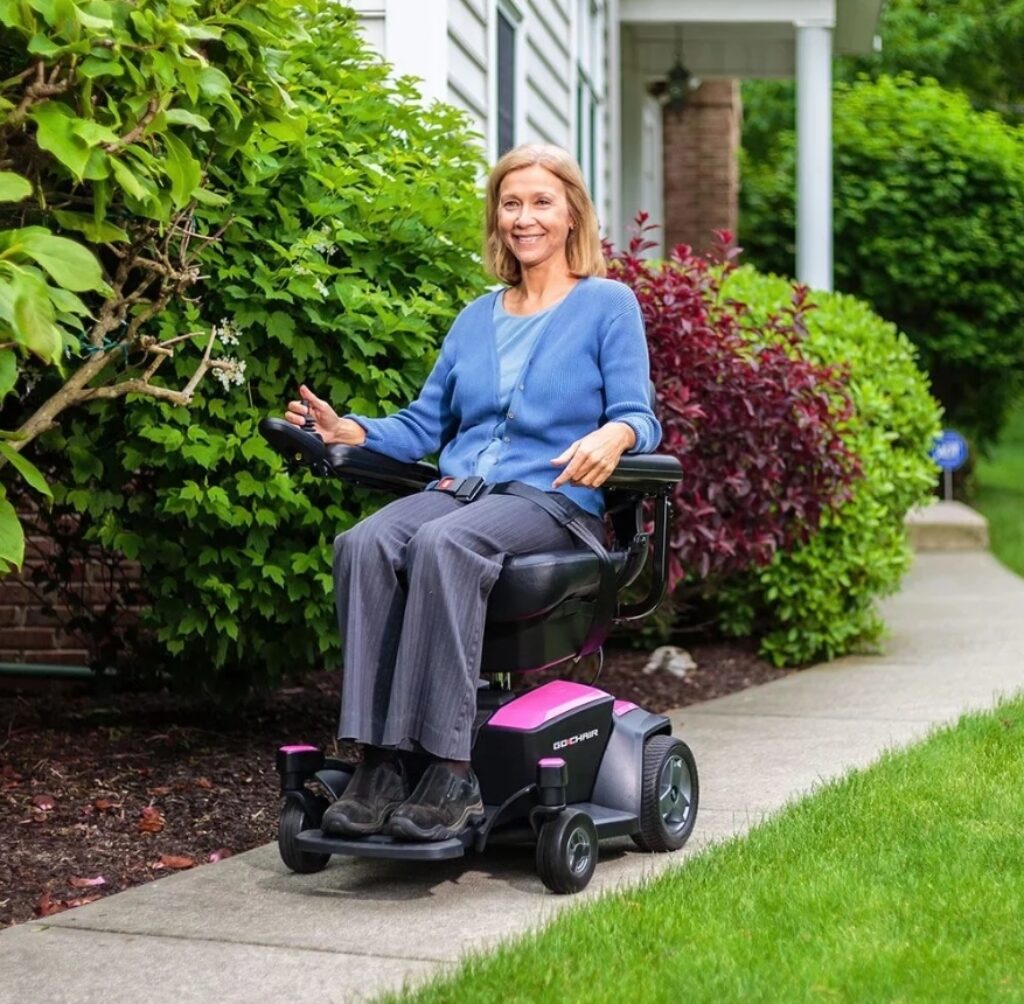
Standard electric wheelchairs are durable medical devices designed for moderate use. They have a six-wheel or four-wheel design and usually feature suspension for a smoother ride. Standard power wheelchairs are fairly comfortable if you do not have skeletal deformities, balance issues, or other significant positioning needs, as they typically feature a large captain's style chair and adjustable footrest.
Standard power wheelchairs have medium to large batteries and are generally good for use indoors, on sidewalks, and on flat grass. Unless you’re traveling many miles, you can go everywhere you want to in a day without running out of charge and plug in at night. Standard power wheelchairs can travel slightly faster than typical walking speed, and sometimes even faster depending on the model.
Most standard electric wheelchairs do not have any power seating features, but a few have a seat elevator or tilt function. Some have a removable seat cushion so you can use a pressure relief cushion instead, but if you need extra back, thigh, or lateral supports, you’ll be better served by a complex rehab power chair.
If you use a standard power wheelchair, you’ll probably need to take public transportation or get an accessible van as most of them weigh at least 200 pounds and are not easily portable. For this reason, standard power wheelchairs have become somewhat less popular than they used to be. Most people opt for a folding power wheelchair or move up to a complex rehab power chair if they need one.
Who Should Use a Standard Electric Wheelchair
Standard power wheelchairs are great for those who have an accessible vehicle or easy access to public transportation. If you sometimes or frequently need to use a wheelchair in your home, but you don’t have complex positioning needs and you sometimes spend time out of your wheelchair (such as sitting on a couch), they could be perfect for you.
Standard electric wheelchairs are a good choice if you need a strong and reliable yet relatively simple device for your mobility needs. They provide a balance between ease of use and durability.
Standard Electric Wheelchair Brands We Recommend
Pride Mobility is the undisputed leader in this category with their Go and Jazzy lines of electric wheelchairs. Go chairs are semi-portable and can be taken apart for travel. Jazzy electric wheelchairs are sturdy and work well for older adults and people who need a wheelchair for moderate use. As mentioned, we are not particularly fans of this wheelchair category due to the high weight combined with limited features, but if you’re looking for a basic power wheelchair, Pride is a solid brand.
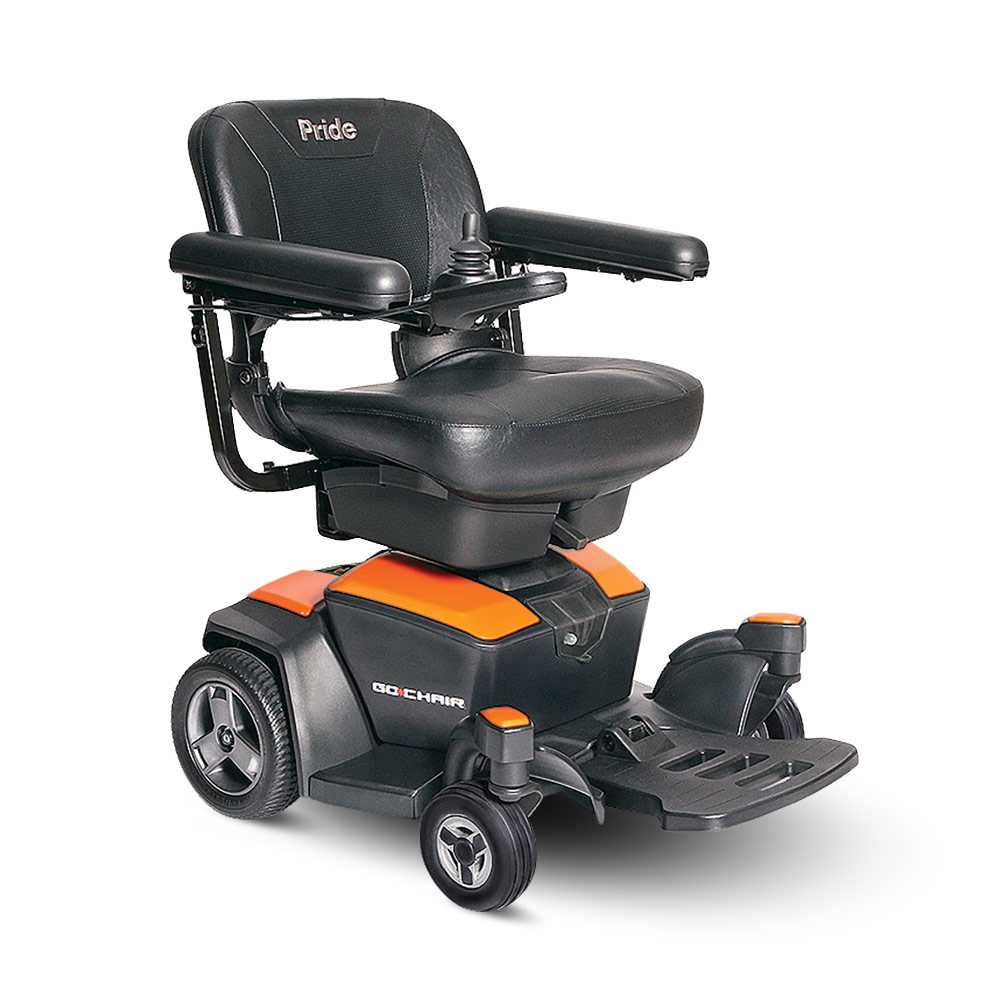
Pride Go-Chair Semi-Portable Power Wheelchair
- Semi-portable
- Batteries with 13-mile range
- 3.8 mph top speed
- Max user weight 300 lbs.
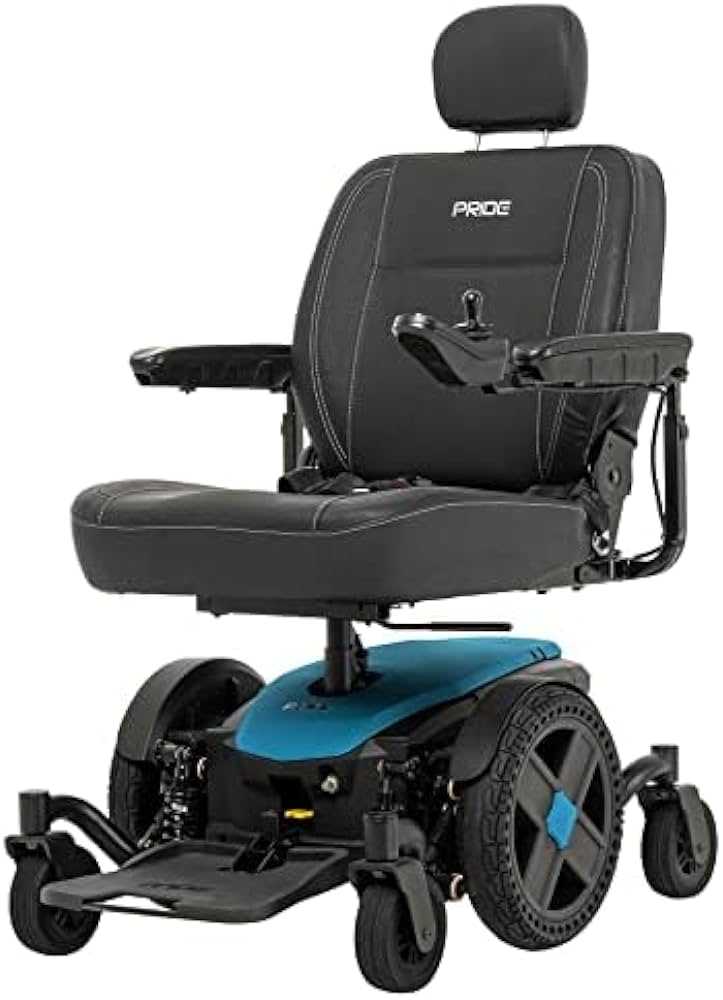
Pride Jazzy EVO 614 Group 2 Power Wheelchair
- Durable for full-time use
- Batteries with 19-21-mile range
- 4.4 mph top speed
- Max user weight 300 lbs.
Complex Rehabilitation Technology Power Wheelchairs
Complex rehabilitation technology power wheelchairs (yeah that’s a mouthful) are designed for people with significant mobility needs and physical limitations. They have the most robust features of any electric wheelchair and therefore they are technologically complex and expensive.
Complex rehab electric wheelchairs have powered seating features including but not limited to tilt, recline, seat elevation, and standing. These wheelchairs are heavily customized based on the needs of the user. Complex rehab chairs usually have pressure relief and/or a contoured seat to help with scoliosis, spasticity, pain, and other aspects of an individual's medical condition.
CRT power wheelchairs are extremely comfortable when fitted properly. Depending on the model, they can perform very well outdoors and have a long battery life. Most importantly, they can empower you to do things no other power chair can, such as reach high objects, sit in a bar, take a nap, or even stand.
Who Should Use a Complex Rehab Technology Power Wheelchair
If you are not ambulatory (or minimally ambulatory), and need specialized seating, this is the type of power wheelchair you need for daily use.
If you are not able to stand by yourself, reach objects in your home, transfer in and out of bed without help, shift your weight for pressure relief, etc. then you should use this type of wheelchair.
If you have a history of skin breakdown, chronic pain, and/or other symptoms that have been made worse by using a different type of power wheelchair or can’t be addressed by a standard power wheelchair, a CRT wheelchair could help you.
If you have an active lifestyle and need the features only this type of chair can provide, it’s worth fighting for.
Due to the high cost of complex rehab power chairs, most are paid for at least in part by insurance. To get authorization from insurance for these types of chairs, you’ll need to go through a lengthy process including a meeting with your doctor, an evaluation from a physical or occupational therapist, and many discussions with the therapist and/or equipment provider to ensure the chair will meet your needs.
These types of wheelchairs aren’t for everyone. Due to their size and weight, they are not portable and you will need to use public transportation or have a van with a ramp or lift. Since they have so many complex electronics, they can sometimes break down and it may take weeks or even months to get them repaired.
Recommended Complex Rehabilitation Technology Power Wheelchair Brands
If you’re getting a Group 3 power wheelchair, the top two brands in the United States are Permobil and Quantum (a division of Pride Mobility). Both of these companies have a good track record of making quality products and shipping parts quickly if repairs are needed.
Permobil
Permobil is a Swedish company, but they manufacture their wheelchairs for the American market in Tennessee and have a large corporate headquarters there, so getting parts is not an issue. They make the most advanced power wheelchairs on the market with features such as standing and anterior tilt (leaning forward to reach objects). Their chairs tend to be larger and heavier than other brands, but provide excellent outdoor performance and durability.
Quantum
Quantum Is the division of Pride Mobility that makes complex rehab power wheelchairs. They are known for their advanced seat elevation system, iLevel, that allows users to drive their chairs at a higher speed than typically allowed while in an elevated position. Pride has a good reputation for working with the disability community and listening to feedback from users. Their Quantum wheelchairs tend to be somewhat more compact than Permobil, offering excellent indoor maneuverability but slightly less robust outdoor performance.
Smaller and Non-US Brands
There are many good smaller companies that make power wheelchairs. We can't list them all, but here are a few to check out.
- Bounder is a small American company that makes extra tough, fast, old-school-looking power wheelchairs. They have a fan following and make quality products.
- Balder is a lesser-known brand of power wheelchairs in the United States, but they sell a lot of wheelchairs in Europe. They make standing wheelchairs, too! We believe them to be a good company, but don’t have personal experience.
- Alltrack by Amylior is another excellent small power wheelchair brand based in Canada but available in the USA.
Power Wheelchair Brands to Avoid
They are two fairly large brands of power wheelchairs that we do not recommend. Just to keep lawyers off our backs, we are not going to name them. Both of these companies used to be leading manufacturers in the 1990s, but their quality has deteriorated over the years. One still makes good manual wheelchairs.
If you’re being steered toward a major brand of CRT wheelchair we did not list, unless there’s a good reason such as a specific feature that brand offers, we recommend using caution. Of course, brands change in quality and features over time, so if and when other brands improve, we’ll update this article accordingly.
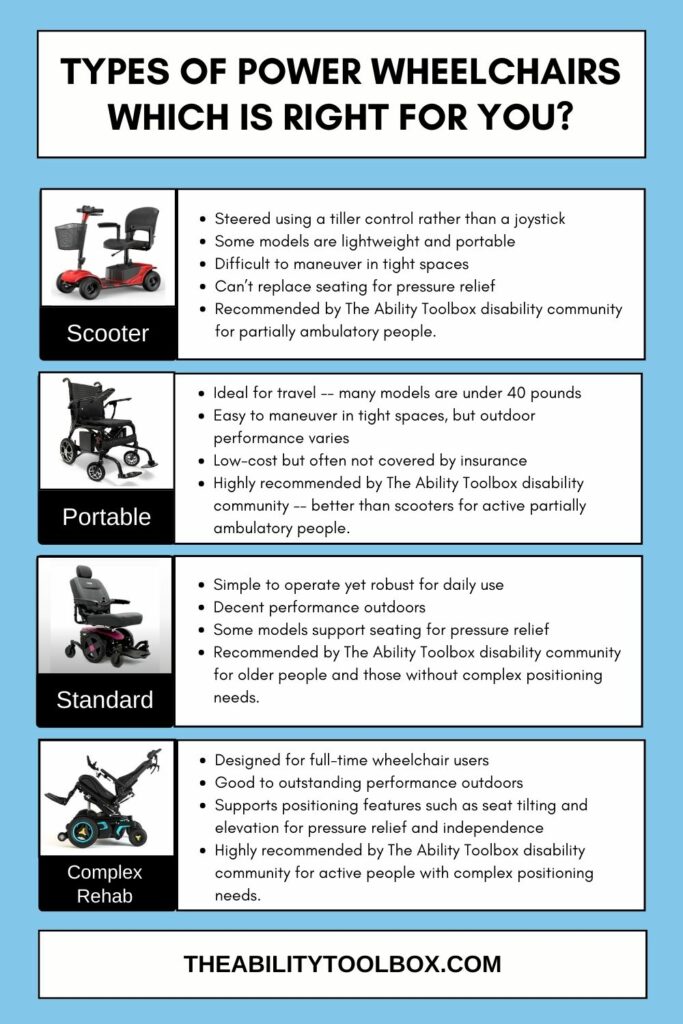
Types of Power Wheelchairs: Choosing the Right Drive Wheel Configuration for Your Needs
When you’re looking at different types of power wheelchairs, you’ll notice that the big wheels, the ones that power the device, can be located in the front, center, or rear. If you’re wondering if this matters, the answer is yes. Here’s what you need to know about drive wheel configurations so you can decide which one is right for you.
Mid-Wheel Drive
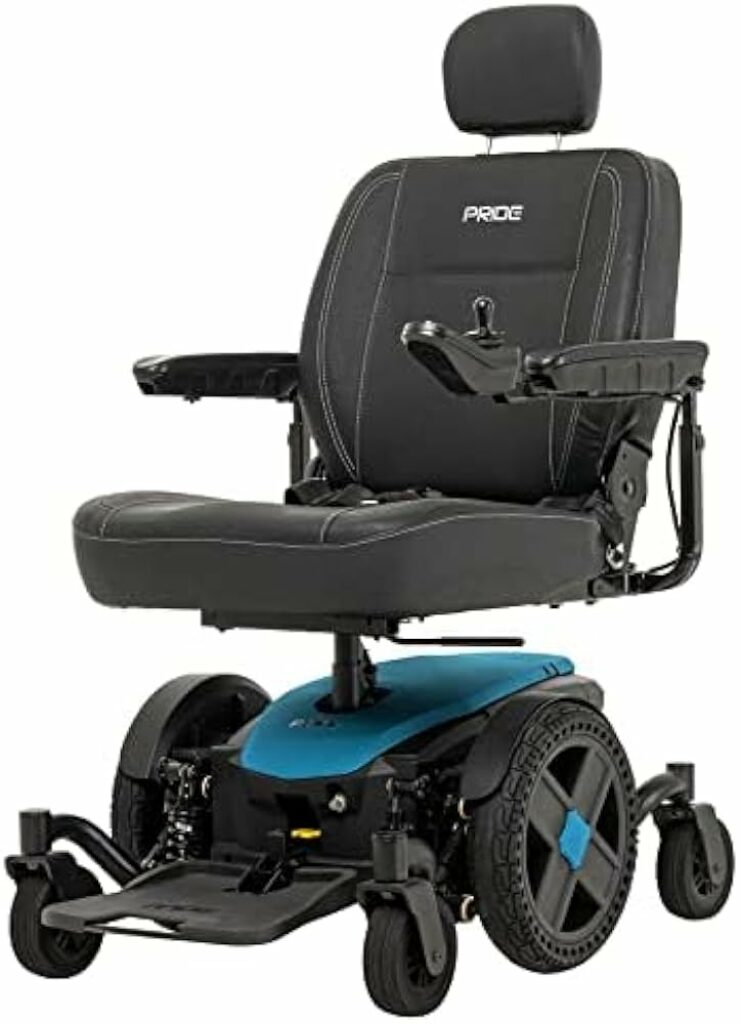
Mid-wheel drive power wheelchairs (also known as center-wheel drive electric wheelchairs) are the newest drive wheel type, but they’ve become the most popular. If you have never used a power wheelchair before, you’ll find this style the easiest to drive.
Mid-wheel-drive electric wheelchairs are extremely maneuverable because they turn on a dime. The center of gravity is located directly under your seat, which makes turning intuitive. If you live in a small home or apartment with narrow hallways and tight turns, you'll almost certainly prefer mid-wheel drive.
With that said, mid-wheel drive power wheelchairs have a few disadvantages. Your DME provider must ensure that your seat is centered over the drive wheels. If the user is placed too far forward, the chair may feel tippy and unstable, and the front wheels will get stuck in soft ground because they are carrying more weight than they should.
Mid-wheel drive chairs provide maneuverability at a small to medium cost to outdoor performance. Because they have non-driving wheels in both the front and back, mid-wheel powerchairs are more likely to get stuck in mud or have difficulty going over large obstacles. You can end up with your center wheels spinning while the front and back are on opposite sides of a hole or depression in the ground. It’s also very difficult to boost mid-wheel drive chairs up a curb or step that is too high for their front wheels.
Front-Wheel Drive
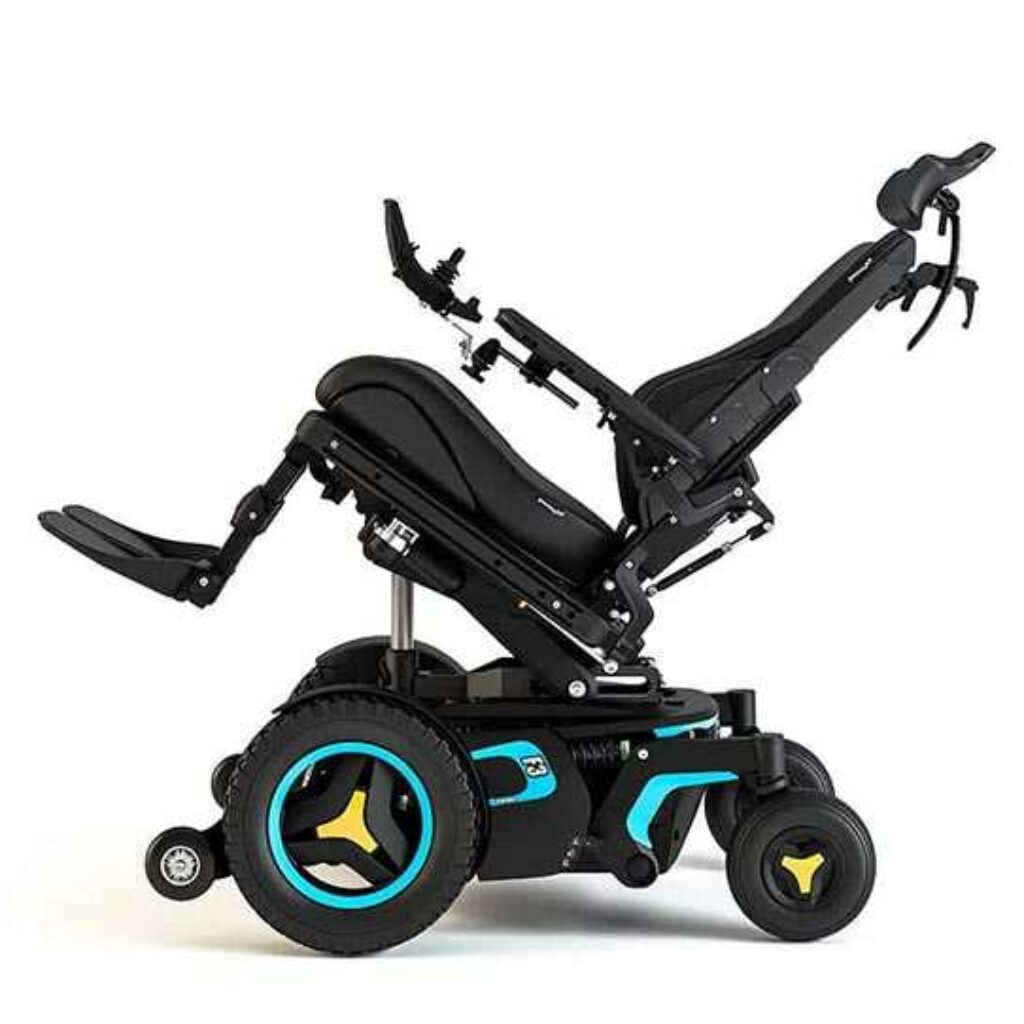
Front-wheel drive power wheelchairs are the second most popular today. The drive wheels are large and located in the front of the chair. These wheelchairs generally have excellent outdoor performance and can climb larger obstacles than center-wheel drive chairs. The powerful drive wheels are less likely to get stuck.
Although front-wheel drive power wheelchairs have anti-tip wheels for safety in the front, it’s extremely difficult to tip them over forward because most of the weight is in the back behind the user. In fact, most standing power wheelchairs use a front-wheel drive configuration because it provides the most stability. If you’ve had bad experiences with wobbly or unstable electric wheelchairs in the past, you’ll feel much more secure with front wheel drive.
However, front-wheel drive power wheelchairs tend to be longer than center-wheel drive chairs to ensure stability. If you have tight hallways and corners in your home, a front-wheel drive power chair may not fit well, or you might crash into door jams and corners (you should see my house). They can also be harder to learn to drive because the user has a lot of chair behind them and may back into things.
Rear-Wheel Drive
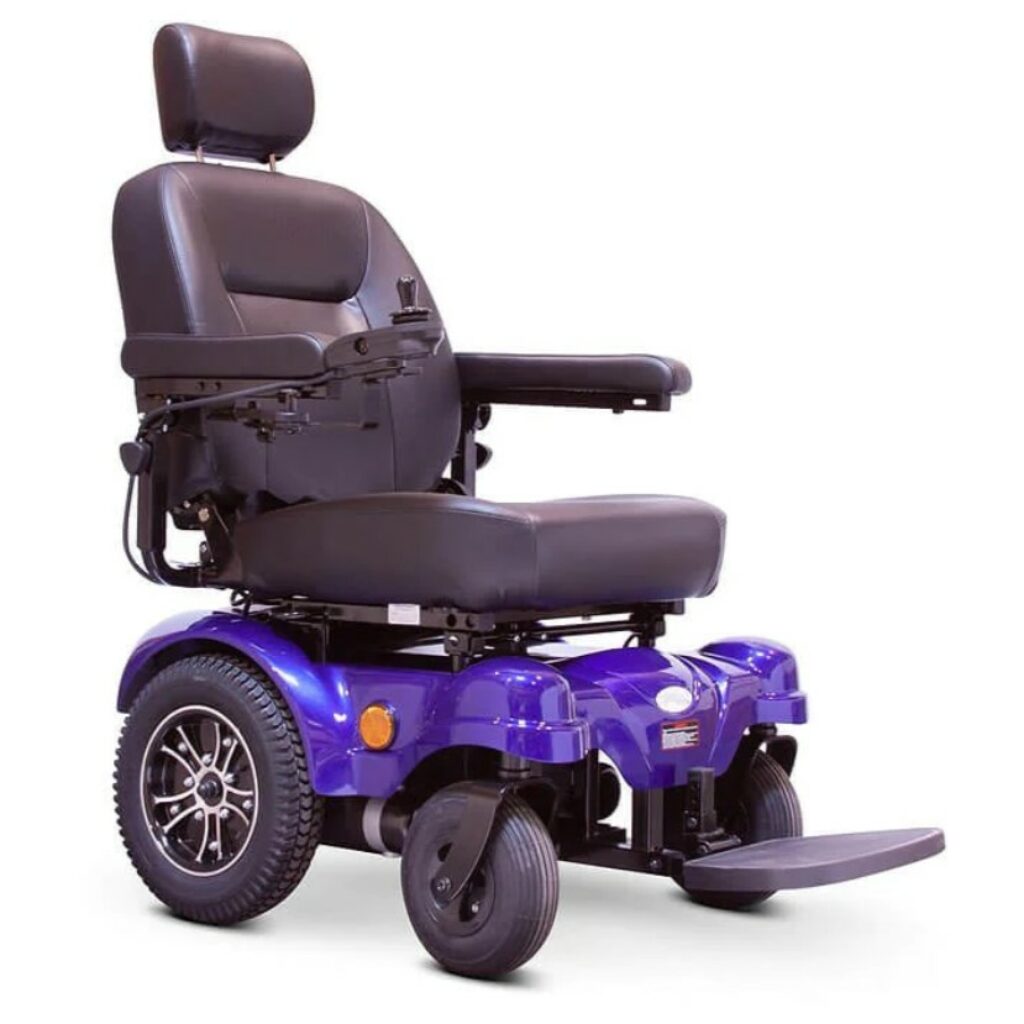
When power wheelchairs first came out, they were all rear-wheel drive. However, today, only folding electric wheelchairs are routinely designed to use rear-wheel drive. Why isn’t rear-wheel drive popular anymore? I have no idea. I always loved it.
Rear-wheel drive electric wheelchairs offer good stability. Unlike other drive configurations, rear-wheel drive power wheelchairs can be tipped back slightly to pop over obstacles, similar to how a manual wheelchair user can pop a wheelie. This will sometimes be needed with portable power wheelchairs, and occasionally others if you’re trying to go up a curb with assistance. Their obstacle-climbing capabilities depend on the size of the front wheels, so bigger front wheels are better.
Rear-wheel drive power wheelchairs are fairly intuitive to operate, especially if you’ve ever used a manual wheelchair. They have the widest turning radius, but can be easier to maneuver than front-wheel drive depending on their overall length.
Which type of electric wheelchair do you recommend?
Share your experiences with our disability community in the comments.
Founder and Editor-in-Chief of The Ability Toolbox. I received my BA in English from Stanford University and MA in Clinical Psychology from Antioch University Los Angeles, and have worked in entertainment and health media for over 20 years. I also blog about traveling with a disability. As a wheelchair user with cerebral palsy, I am deeply committed to amplifying the voices of the disability community through writing and advocacy.



















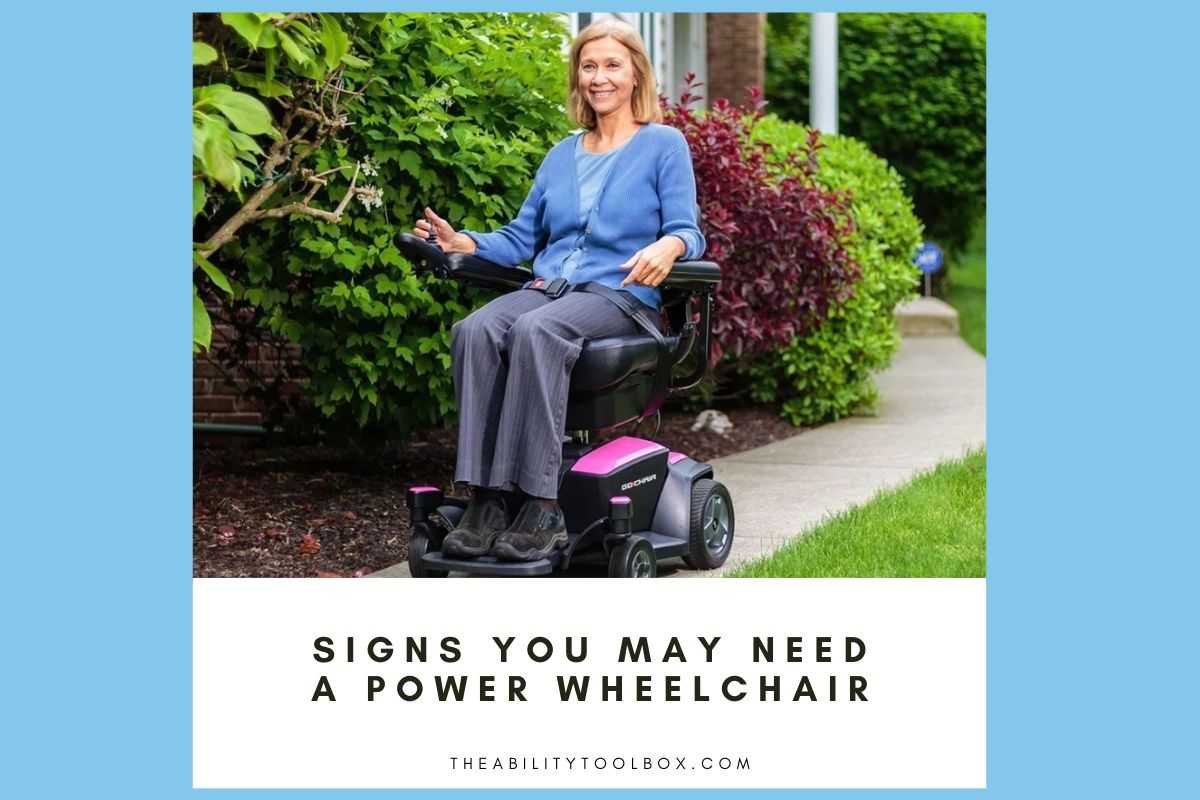
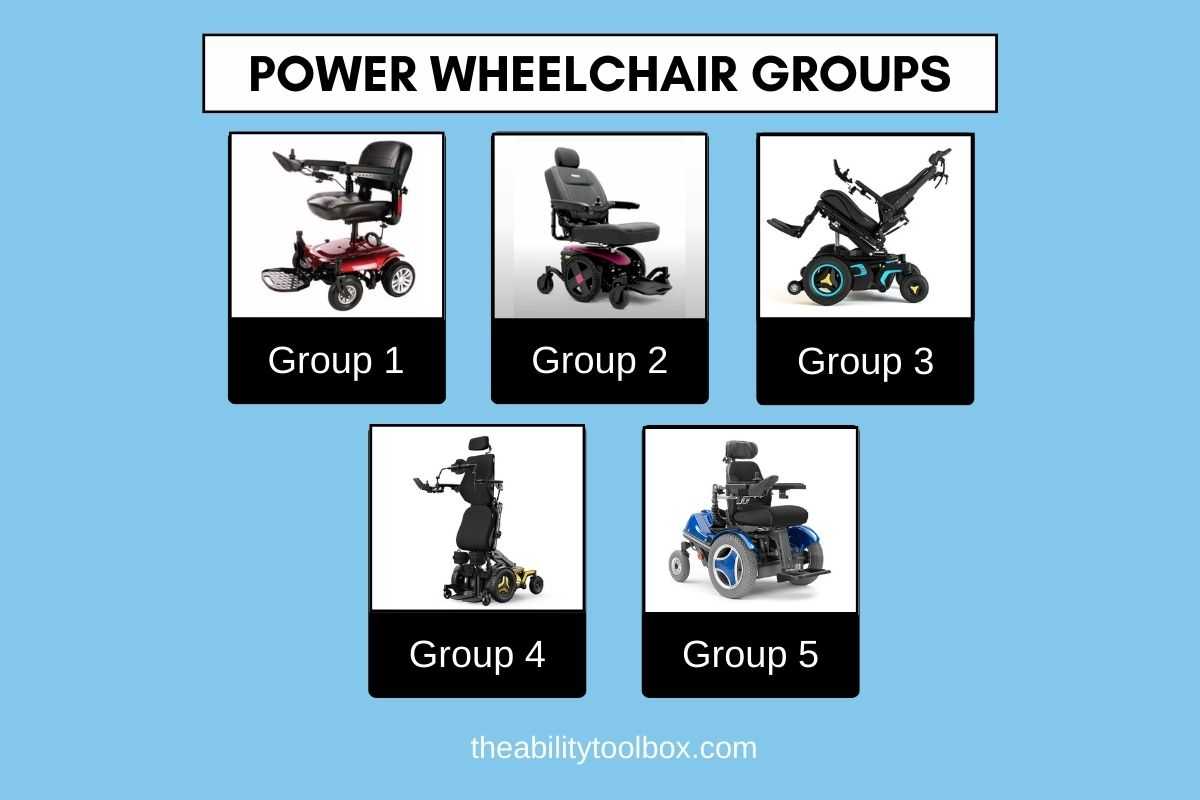





Start the discussion at community.theabilitytoolbox.com